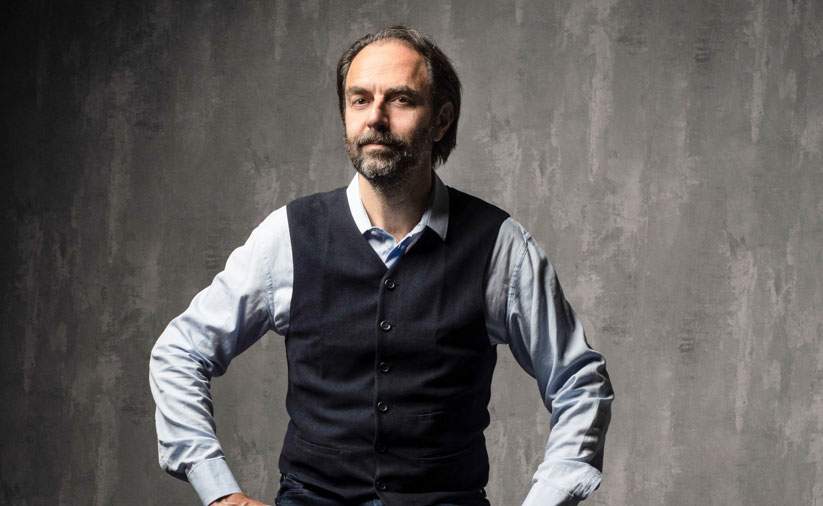Starting Oct. 29, the new season of Art Night, which airs every Friday at 9:15 p.m. on Rai5, starts with a new host: Neri Marcorè. Art Night is the Rai Cultura program that tells about art and the world around it, and the program of the new edition is already very dense: it goes from the Macchiaioli to photojournalism, from the great collectors from all over the world to the unreal worlds of Miró and Bosch, and then to the performances of Marina Abramović, and again a jump back to Giotto, and again a thousand stories in all the declinations of art.
Rai Cultura decided to entrust the program to Neri Marcorè because, they explain from Viale Mazzini, “art is not just as we expect, and Neri Marcorè will tell it to the public in his own way, ranging between painting and books, sculpture and opera, photography and light music, fishing among everything that feeds his imagination and ours. Because all art forms, no matter how different in history, medium, place, speak to each other from interminable distances and are contemporary even if separated by the abysses of time. Because art is lightness and depth, drama and irony, mockery and reflection, outrage and sacredness. It is the contradiction of our existence, the play between light and shadow, imitation and reality. It is what surrounds us, and what needs to be discovered; what nourishes us, feeding our spirit and our intelligence -- and what we nourish, giving it new meaning each time.”
The first episode, airing Friday, Oct. 29 at 9:15 p.m. on Rai5, is titled E Luce fu! and begins with a documentary dedicated to the Macchiaioli: Diamoci alla macchia. A Revolutionary Painting by Valeria Schiavoni, directed by Monica Onore, produced by Rai Cultura. Neri Marcorè takes a trip back in time, to Tuscany, to the years before the unification of Italy when an artistic movement was born under the derogatory label of the “Macchia.” It was a movement that changed the way of seeing and representing reality, with the desire to revolutionize the rules of painting that until then had dominated the world of art and the Academies. “At a time when nights were lit by candlelight, the Macchiaioli had in light the essence of their painting,” declares Fernando Mazzocca, art historian. An inspiration that the Impressionists would discover a few decades later.
Punctuated by the words the artists entrusted to their letters, the account highlights the role of their early collectors, friends who had the insight to encourage and support them, financially but also with a cultural dialogue that sought to consecrate artists who were often misunderstood.Thanks to the intervention of leading Macchiaioli scholars and great Italian art critics, the profiles of the leading figures of this movement and of those, who with open minds and free of prejudice loved and supported them, are defined: Elisabetta Matteucci, director of the Matteucci Institute; Federico Bano of the Bano Foundation-Palazzo Zabarella in Padua; Vanessa Gavioli, curator Modern Art Gallery of Palazzo Pitti in Florence; Giuliano Matteucci, Founder of the Matteucci Institute in Viareggio; Eike Schmidt, Director Uffizi Galleries in Florence. And then, above all, art historians Silvio Balloni, Lorella Giudici, Fernando Mazzocca. Protagonists are the works of Giovanni Fattori and Silvestro Lega, both classic and reactionary, Telemaco Signorini intense and everyday, flanked by those of lesser-known artists: Adriano Cecioni, Odoardo Borrani, Raffaello Sernesi, Vincenzo Cabianca.
The documentary aims to convey the taste of an era pervaded by a revolutionary ferment, in culture and politics, that of the Italian Risorgimento, reconstructed by historian Angelica Zazzeri, when the art world was about to be challenged by a new art to which instead the Macchiaioli approached with curiosity: photography, recounted by Emanuela Sesti, historian of photography at the Fondazione Alinari per la Fotografia in Florence.
Next, the audience will be able to see the documentary Joaquín Sorolla, The Travels of Light, dedicated to the Spanish naturalist painter Joaquín Sorolla y Bastida, who made light his inspiration, after being impressed by the Nordic painters and “luminism” the dazzling light of the Mediterranean began to illuminate his works, springing from painting outdoors, and with a choice of colors that allowed him to capture all the nuances. He achieved his international recognition with the Grand Prix of the World’s Fair in 1900. At a solo exhibition in London in 1908, he met the billionaire and patron of the arts, Archer Milton Huntington, who commissioned his life’s work: the decorations of the Hispanic Society of America in New York. The enormous effort expended over eight years of travel, when he produced up to fourteen large panels and countless sketches, will affect his health. In 1920 he was stricken with a cervical hemorrhage, and three years later he died of it without being able to see his work exhibited in the Hispanic Society of America. After his death, his fame and work would fall into oblivion, until a few years ago, when his work returned to its rightful place in the History of Painting.
Art Night is a program by Silvia De Felice and Emanuela Avallone, Massimo Favia, Alessandro Rossi, with direction by Andrea Montemaggiori.
Image: Neri Marcorè, photo by Tamara Casula
 |
| Rai5, kicks off the new edition of Art Night, with Neri Marcorè. It starts with the Macchiaioli |
Warning: the translation into English of the original Italian article was created using automatic tools. We undertake to review all articles, but we do not guarantee the total absence of inaccuracies in the translation due to the program. You can find the original by clicking on the ITA button. If you find any mistake,please contact us.